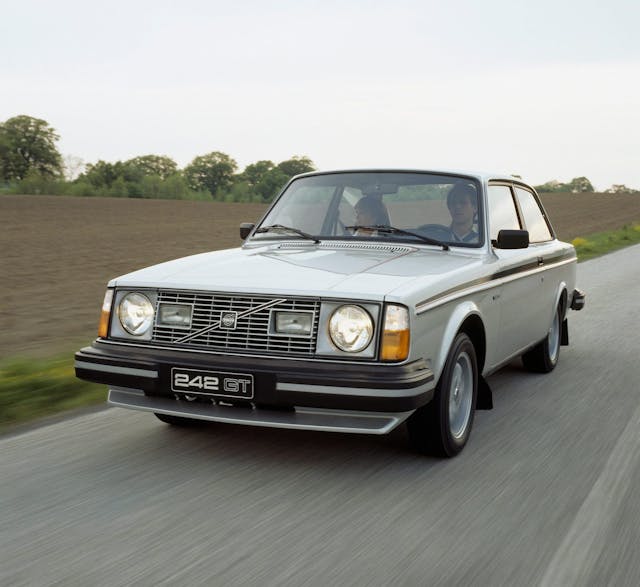5 cool cars treading water in a hot market
Your take on rising values in the car market over the last two years may depend on perspective. What you had in your garage before COVID versus what you’ve wanted to add to your garage in the intervening years can be all the difference between a positive outlook and a slightly more skeptical one. If you bought a 996-gen Porsche 911 in early 2020, congratulations are in order. If you were excited at the prospect of the C8 Corvette debut lowering values of C7 Grand Sports, well, the pandemic had news for you.
Fortunately, despite all the activity on the market, there are still cars out there for all interests that haven’t been party to the dramatic rise we’ve seen in other models. Truth is, in any given update to the Hagerty Price Guide, the plurality of cars (and sometimes the outright majority) do not change in value.
This cadre of collectibles have all seen their median #2 Hagerty Price Guide values stay relatively flat from May, 2020 through April, 2022. Note we said median. Some top-flight examples of these cars have brought more money, but one or two big sales does not necessarily reset a car's price. Looking at the median value helps provide a clearer picture of the model valuation as a whole. Also, we noticed that #3 (driver) Condition values of the below examples generally tracked with the trends reported here. That’s because the larger pool of cars within center of the bell curve for quality tend to lag the more pristine cars when values change.
1975–1980 Volvo 242

0 percent change
Unlike its long-roof sibling, which graced our 2022 Bull Market list and has seen its #2-condition (Excellent) median value increase 7 percent over our subject period, Volvo’s two-door 240-series has yet to take off in value. Perhaps owing to Volvo's wagon-rich identity, these quirky coupes remain the darlings of Volvo nerds (a group to which this author belongs) and not many others.
You’re not likely to win any stoplight drags with the modest power coming from the factory 2.1-to-2.3-liter red-block four cylinders, but the engine does take to turbocharging well if you want more power. The 242 was also a fixture in SCCA club racing and even won the 1985 European Touring Car Championship, so they can be made to handle as well. If cruising is more your speed, the 242 is a perfect companion. They’re bulletproof, have the classic, clean lines we’ve come to expect from Volvo, and won’t break the bank: median value has stayed flat at $8200.
1962–1964 Buick Wildcat
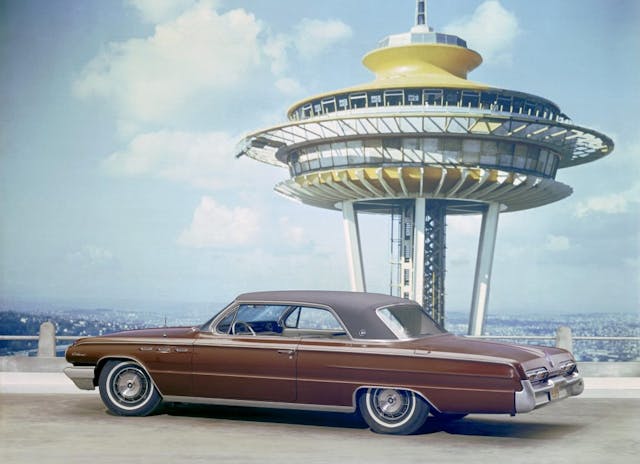
-2 percent change
Let’s face it: There are always a lot of bow ties and blue ovals at classic car shows. The Impala SS and Galaxie 500/XL are awesome, but sometimes it’s nice to mix things up a bit. Buick’s 1962–64 Wildcat presents a prime alternative in the sporty, mid-luxury car market that was just beginning to hit its stride in the early 1960s.
Kicking off life in 1962 as a submodel of Buick’s Invicta, the Wildcat featured a 401-cubic inch Nailhead V-8 sporting 325 hp and 445 lb-ft of torque along with bucket seats and styling accents to set it apart as the sportier large Buick. 1963 saw the Wildcat become its own model, offered in two-door coupe, convertible, and four-door hardtop and sedan bodies. Tasteful aesthetic updates kept the car fresh each year, and in 1964 Buick added some more muscle under the hood in the form of an optional 425-cubic inch V-8 with either 340 or 360 hp. Buick’s Wildcat carried the sporty large platform mantle for Buick until the Centurion was introduced in 1971.
While value trajectories are consistently flat or slightly negative across body styles, early Wildcat convertibles and coupes claim more money than their four-door counterparts. Across this first generation of Wildcats, median #2 value clocks in at $19,000.
1969 Pontiac Trans Am
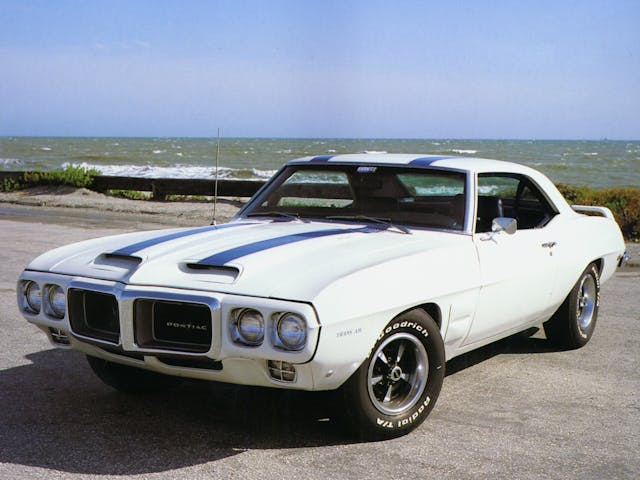
0 percent change
Yep, this one surprised us, too. Muscle cars have been on a tear, and the debut year for the Trans Am is a rare bird, with only 697 copies made in 1969. That, coupled with some very desirable features, has ensured that the ’69 Trans Am has been one of the most valuable F-bodies GM has ever produced. Yet those values haven’t shifted, even as other GM muscle leads the Big Three in value increases. Median #2 condition for these first-year T/As has held steady at $204,000.
Then-head of Pontiac John DeLorean had originally pushed for the Trans Am to be powered by the marque’s overhead cam six cylinder and have a slew of handling improvements over the base Firebird and its Camaro sibling. The six was shelved for Pontiac’s 400-cubic inch V-8, providing 335 hp in Ram Air III trim and 345 hp when buyers stepped up to the Ram Air IV. The chosen engine displacement rendered the Trans Am ineligible for the series for which it was named, but that was ultimately irrelevant. DeLorean wanted to create a halo Firebird model, and within a decade the Trans Am’s legendary status was secured.
1975–1980 MGB
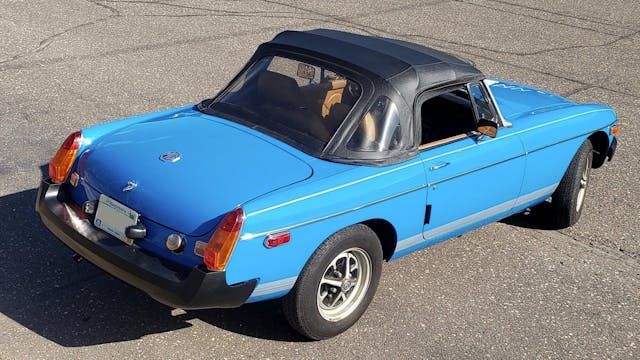
1 percent change
MGBs frequently find themselves overshadowed by other British cars of their era, and of course there’s the undying assertion that the Miata is the perfected version of the little British convertible. To add insult, the dapper chrome grilles of the earlier cars were replaced in 1974 to meet U.S. impact regulations, taking away some of their classic charm. Nevertheless, the plentiful MGB remains a popular choice for car nuts who want to experience one of the brands that introduced affordable sports cars to the U.S.
The rubber bumper cars represent an excellent entry point to the model. The median #2-Condition price of a 1980 MGB is $15,100, an increase of only $200 from two years ago. Even though the B survived into what we might call the Radwood era, the vibe is more "1960s sports car on a budget." Their looks may no longer evoke the Swingin’ Sixties, and the later cars ride a bit higher than their forebears, but the essential slow-car joy remains. Eighty-five horsepower is not a lot (California cars made do with a mere 70), but the MGB typifies a momentum car that’s fun within legal speeds.
1999–2005 Ferrari 360
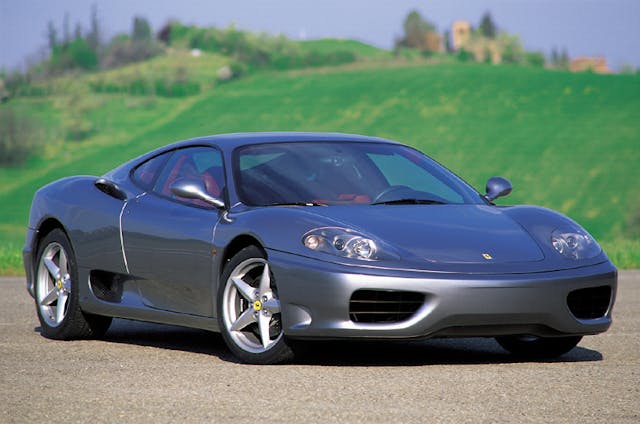
1 percent change
The Ferrari 360 stands firmly in the analog era while beginning to offer a hint of the technology that’s come to define modern sports cars. By replacing the 355, which itself dated back to the 348 introduced in 1989, Ferrari’s 360 took the company’s mid-engine sports car into the new century with a completely new design and aluminum chassis. The 3.6-liter V-8 screamed to a 8700 rpm redline, and you had a choice of the traditional Ferrari gated shifter for your six-speed manual or paddles tied to a single-clutch automated manual. In addition to increased performance, a more modern interior as well as normal and sport settings gave the 360 a step up in livability over prior generations. What’s more, engine-out services were greatly reduced by access panels and thoughtful packaging, saving money on operating costs. The 360 was truly a step forward.
The 360’s inherent goodness, coupled with the surge in popularity of sports- and supercars immediately preceding our current era, make it a bit surprising that this Ferrari hasn’t seen a more significant median price increase. Across the Modena (coupe) and Spider versions, the #2-condition median is $96,100.
